Is Type one diabetes management just about controlling numbers?
As caregivers of type one diabetics, we are so much used to diabetes management in our day to day life that we give insulin for food, check sugars, correct highs and lows, and try to get BG in target ranges. When you stare at BG data for long enough, it almost looks like insulin eats away excess sugars.
So we feed our children what they like, and give insulin and bring sugars to normal levels. The child's sugars are finally in our defined target ranges and all is good with the world. We see the glucometer and feel relieved that sugars are controlled. This is the story of our lives.
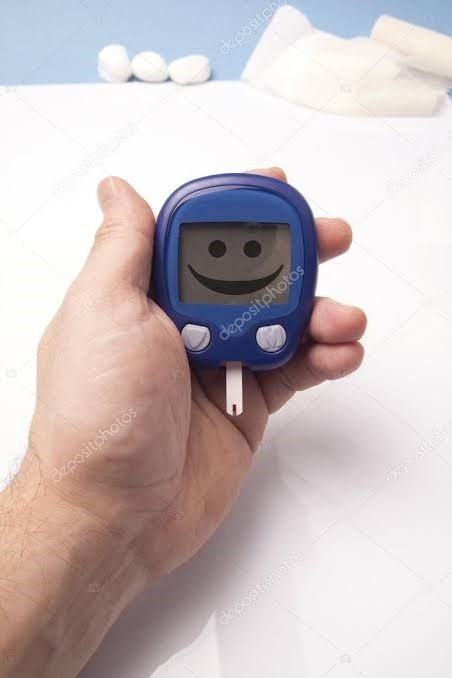
But wait, what happened in the background?
We pumped their body with a lot of insuln to cover their favourite foods. Is the body eating away that extra insulin? Or is that insulin inducing storage of fats somewhere unwanted.
We are taught "It's ok, let the kids eat, you can correct with Insulin and bring the sugars back to normal". BG is corrected and time in range taken care.
Is that all to the story?

When my daughter was diagnosed a few years ago, I used to search for support groups and see if someone can share the same pain. When we heard people mention due to ignorance, that, "T1D is caused by eating sugar", we all as a community just wanted to confront them by explaining T1D is an autoimmune condition which did not come from eating sugary carbs before diagnosis.
There was a strong message given to all in these communities, to protect our sense of normacly - "T1Ds can eat absolutely anything. Just cover with insulin". We learnt to just bash anyone who says T1Ds cannot eat sugar.
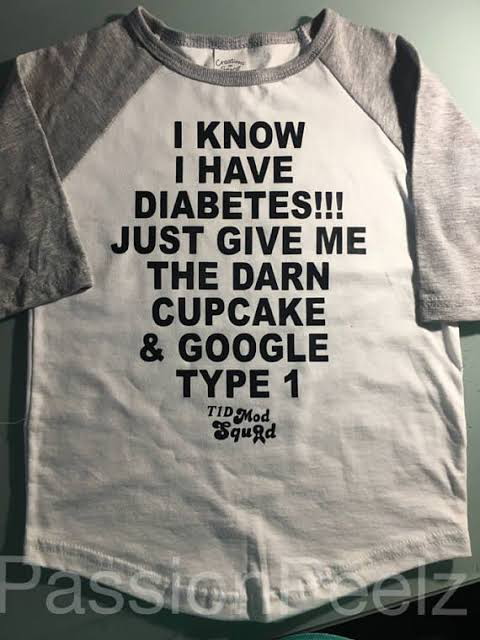
Is that a correct supposition? Technically yes, T1s can eat anything with exact doses of insulin. But practically, it's not easy. Atleast without consequences. Immediate consequences is spike in sugars, despite the insulin bolus. Next consequence can be dealing with lows in a few hours due to higher doses of insulin. The familiar rollercoaster.
It is no secret what high blood sugars can do. They damage the proteins in blood vessels, leading to damage to all body parts. We have been learning that only high sugars in prolonged period causes damage to the internal organs. So if we can quickly reduce sugars, we are safe.
It's not just about looking at short and long term damage to organs, but lets look into the entire mechanism of "eat and cover with insulin" concept. Are we doing it right after all?
We also often ignore how kids feel in high sugars. What one can eat is purely individual. BloodGlucose Meter is the ultimate judge. We eat to the meter. And then it took a few years for us to know that T1Ds "can eat anything" but they "Need Not". It took a while for my little daughter to say with conviction, "I can but I don't".
We prefer low carb way of eating for several reasons. When the body needs increased insulin due to growth, hormones, sickness, exercise etc, there is no other way than to take as much insulin as is required. But when we are giving / taking higher insulin doses to cover high carbohydrate intake (that is to say intake of 100 - 120 g or more carbohydrates in a day, a balpark figure used widely among low carbers), what happens? How do we know whether a T1 can handle the amount of carbs that is being consumed? The sugar readings, especially the peaks and fluctuations of BG, when seen as a graph within a target range, will give you the answer.
Is there anything else that we are missing? Is this all we need to know? Definitely not. We still need to find answer to the question - If insulin is not eating away the sugars and carbohydrates, what is it doing?
Lets learn a bit about Insulin and its mechanism of action. Insulin is a peptide hormone, produced by beta cells of the pancreas, and is central to regulating carbohydrate and fat metabolism in the body. Insulin is an important part of metabolism and necessary for turning glucose into energy and distributing it to cells all throughout your body. Insulin causes cells in the liver, skeletal muscles, and fat tissue to absorb glucose from the blood and helps to store the glucose you don't need right away, so it can be used for energy later.
Dr Bernstein said in his book "Diabetes solution": "Insulin is anabolic. Insulin plus carbohydrate can build fat. Insulin plus protein builds lean muscle and the body. Normal blood sugars are essential to avoid diabetic complications and optimally build muscle."
What happens if there is mismatch between doses of insulin, intake of carbohydrates in the diet and amount of exercise one gets. What happens to the excess unused energy, taken from food? Excess unused energy can come from healthy, wholesome carbs like grains and fruit as well. Do all the known "healthy foods" get processed as healthily as we imagine them to? At the end, we are looking at sugar that got converted from food. And we are now talking about the excess of it. Are we able to successfully 'moderate' this excess with moderate quantities of so called healthy food?
The excess energy goes into muscle and fat when insulin is available - it is either burnt in muscle or stored as fat. If the body opts a storage route, which it especially does when high doses of insulin is avaialble, it stores fat as triglycerides. Over long term, this cycle of high doses of insulin and storage will cause insulin resistance/metabolic syndrome and type 2 diabetes.
As per Dr. Bernstein in his book diabetes Solution - "...The amount of triglycerides (the storage form of fats) in your blood stream at any given time will be determined by your heredity , your level of exercise, your blood sugar levels, your diet, your ratio of visceral (abdominal) fat to lean body mass (muscle), and especially your recent consumption of carbohydrate.....Fat (consumed) alone will be burned off. A combination of high carbohydrate foods and fat will foster fat storage . It is, therefore, a myth that Americans are overweight due to excessive fat consumption. Americans are fat largely because of sugar, starches and other high carbohydrate foods...".
About 40-50% T1Ds are obese

Jeff Cyr, a gritter (From the group TypeOneGrit), a low carbohydrate advocate, who I follow in facebook, whose several knowledgeable posts I save and read, says "Those of you that read my posts know that one becomes diabetic(T2) once your subcutaneous adipose tissue can no longer protect you. Subcutaneous adipose tissue becomes dysfunctional, your adipose tissue can no longer safely store the excess energy from food. The adipocytes(fat cells) have become too large in diameter, they have become hypertrophic. They also have become very large, inflamed. Fat cells start releasing inflammatory markers into the circulation. TNFa, IL-6, IL-18, Leptin, others too. These adipocytes(fat cells) have become very insulin resistant. The signal from insulin can no longer properly regulate the flow of free fatty acids(FFA) that are released by your stored triglycerides(units of fat). Free fatty acids are released at an accelerated rate, an unregulated rate of release. THESE free fatty acids are sent to the liver, converted to triglycerides(units of fat). Liver fills with fat, liver becomes extremely insulin resistant. Triglycerides are also stored in pancreas, kidneys, intestines, etc. NOW we have an environment known as lipotoxicity, lipid(fat) overload. Welcome to the START of T2 diabetes. This is just the beginning of T2 diabetes, the nightmare has only begun."
This paper was written in Pediatric Diabetes in 2009. The situation with children and T2 diabetes is much worse today. In 2009, more than > 75% of cases(T2D) in youth in the USA there is a first or second-degree relative with T2 diabetes.
Full text here.
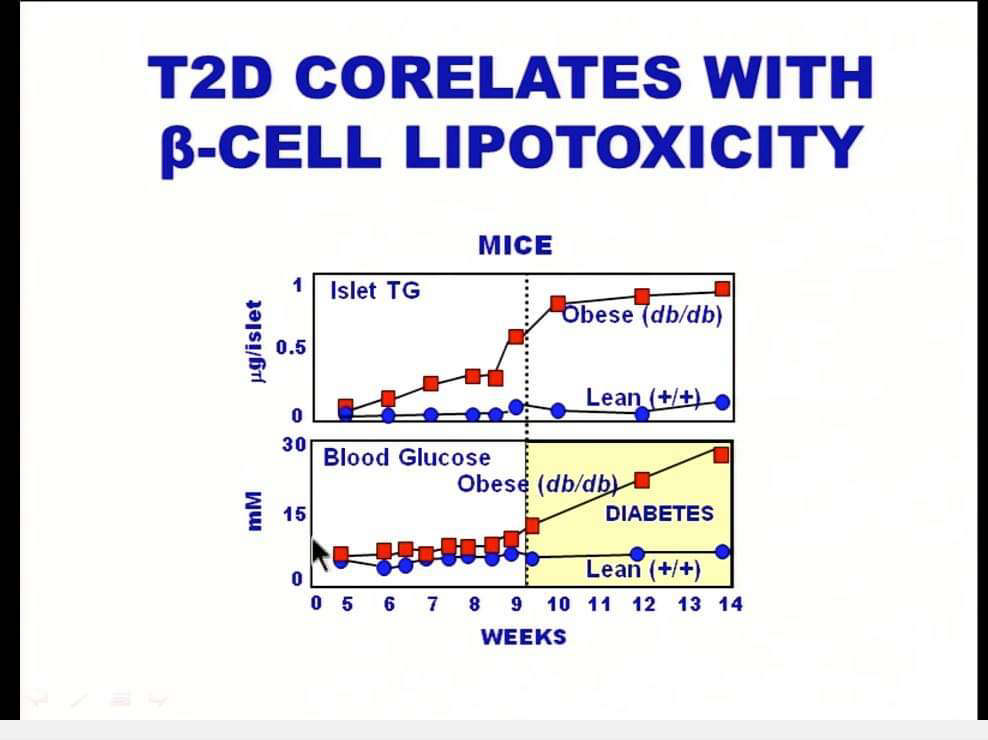
So, do you now see the link between fat storing hormone "insulin" (in high doses) and the reason for Obesity and other syndromes? But this cycle of high insulin-fat storage gets broken when you are doing low carb. Read this . Low carb is a better option because of just this reason. Check out my article on low carb and why it makes sense.
Achieving Normal BG using "Normal" (read) High Carb Food and Advanced Technology vs Low Carb Food and Basic Technology
I have seen people achieving non diabetic blood sugars without low carb. If their standard deviation is good, they are not taking too much insulin, are physically active - awesome! But I realized most of them are who are known in T1 Community as "Sugar Surfers" due to Stephen Ponder's book of the same name, are able to do so by being heavily dependent on technology like CGM, FGM, automated pumps or closed loops to be able to achieve this. We already know that CGMs, FGMs, insulin pumps etc though gaining popularity, are expensive affairs, especially in India.
After reading Dr. Bernstein's book and understanding the concept, I thought that a food can be considered safe/ ideal for a diabetic, if upon consumption the blood sugar does not cross the Safe limit (which is typically the highest point of Blood Glucose that a non diabetic's body would spike for the same meal, which is in practice can be taken as 100-120 mg/dl. This figure, for the lack of a scientific basis, is ballpark and disputable, of course). Usually in high carbohydrate meals though, no mater how correctly you bolus, the Blood Sugar does often cross the Safe Limit since carbohydrates spike BG faster than the insulin can act.
When you take adequate insulin for high carbohydrate meals, after the BG spikes beyond Safe Limit, the levels do come back to normal / safe range within 2-3 hours, and Hba1c is eventually good. Yet, we have to address the same question - What is happening in the background with all that extra insulin? What is happening with Standard Deviation?
Methods like Sugar Surfing include taking enormous amounts of insulin for high carb foods while one has to constantly look at CGM and do the proactive high sugar and low sugar corrections, day in and day out, to be able to stay in normal blood sugar ranges. While in contrast Low Carb eaters use the concept of mild high/low corrections to stay in ranges, they don't have to deal with the risks of taking high doses to cover their foods. When there are fluctuations and undesired consequences despite the best of technology in the world, aren't we still opening up at least a small scope for complications? Is protein surfing not a safer and easier alternative?
Sugar Surfing is great and acheivable, but I often wonder about the cognitive burden on the individual due to the constant corrections and BG inputs. Is is sustainable to practice for the long term? Interestingly, a newly published paper shows that all the new technology is not improving T1D outcomes. Despite technology adoption, outcomes have been getting worse over time.
From the conclusion, "Glycemic control has not improved overall between 2010-2012 and 2016-2018 and in fact appears to have worsened particularly in adolescents."
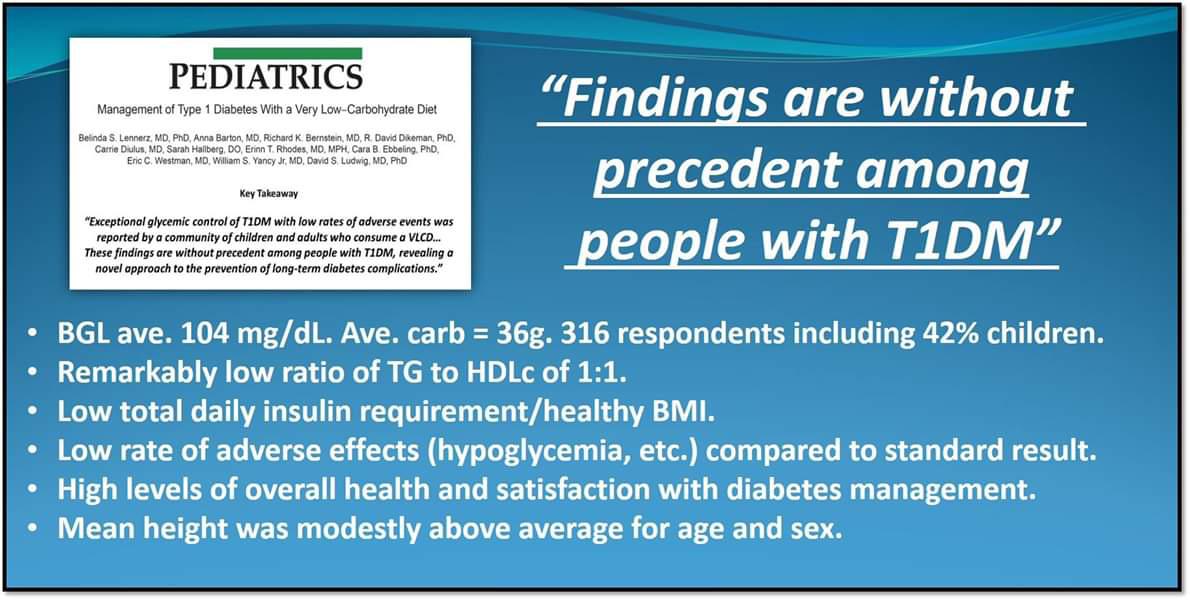
The graph below shows mean HbA1c by age with the orange line representing the 2010-2012 data and the blue line 2016-2018 data. Compare this to the outcomes shown in a Low carb Pediatrics study!
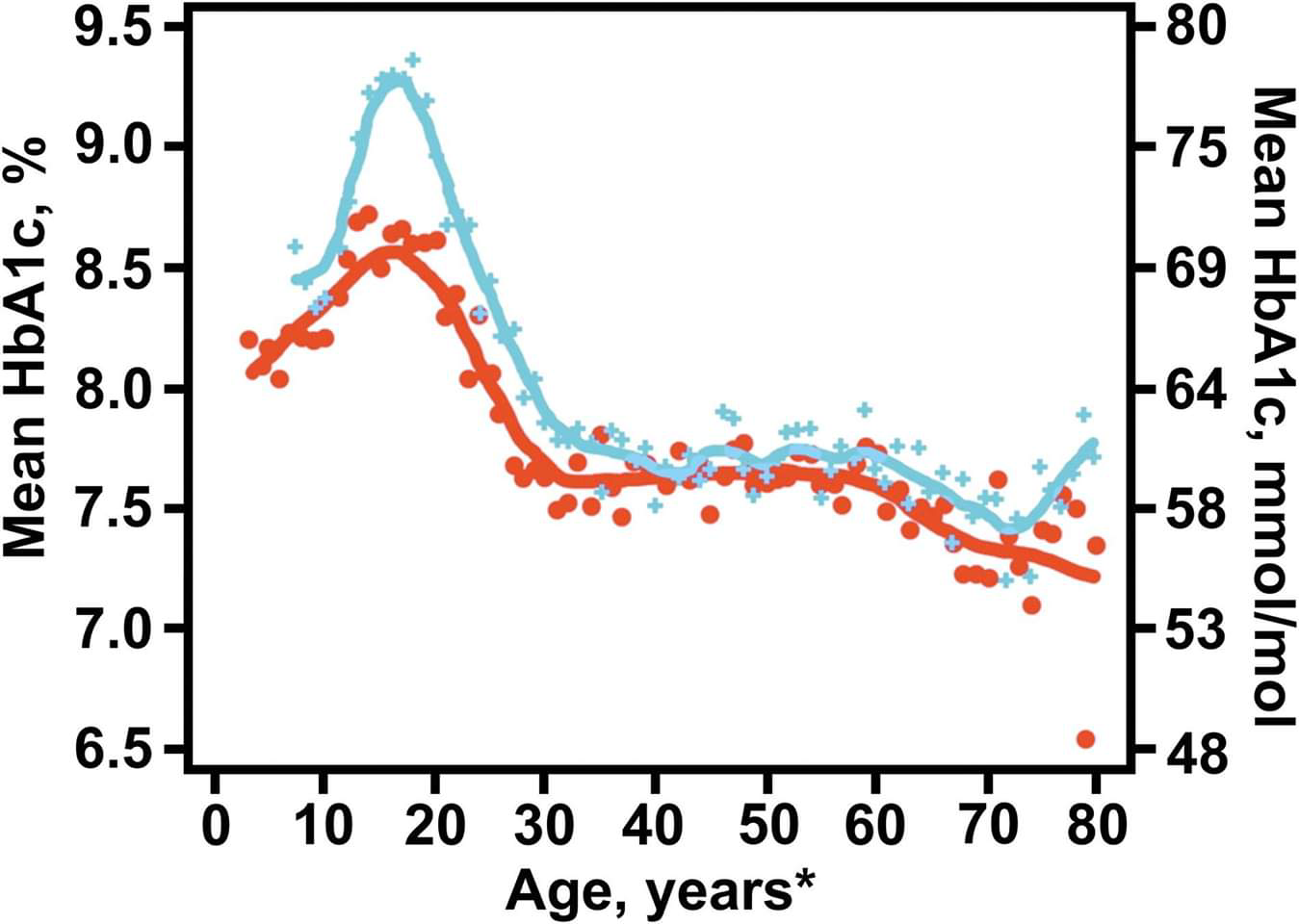
In contrast, I feel, Low Carb eating or for that matter Dr. Bernstein's method does not need the best of the technology to achieve normal sugars. People can use the basic methods of monitoring to achieve normal sugars. There are people who are incorporating advanced technology in the management without deviating away from the concept of Dr. Bernstein. You will find them advocating Low Carb in online communities, while using the technology and at the same time efficiently handling the loopholes of technology. They are equally awesome.
There has been some noise and misconception created in the diabetes world that low carb diet induces insulin resistance. Now, to put that into perspective, dietary fat as advocated by Low Carb High Fat diets may increase basal insulin consumption compared to say a different way of eating. This isn't really 'resistance'. The kind of insulin resistance we don't want is from obesity when fat stores move from adipose to the organs. In low carb diet, we consider carbohydrates as a limit, protein as a target and fat as a lever. Dr. Bernstein does not advocate to replace carbohydrates with fats.
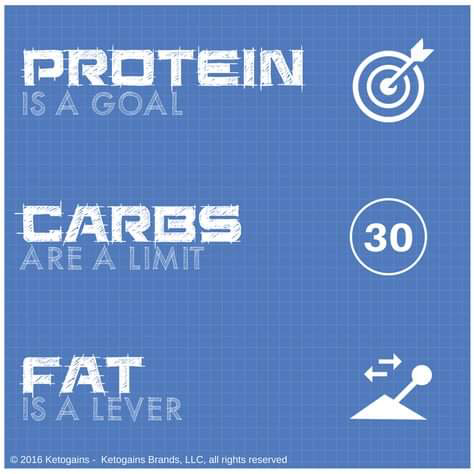
Finally, here is the paradox for you all :
Who is the villain in the pizza? Cheese or the crust? Or both? What if, the body exercised enough?
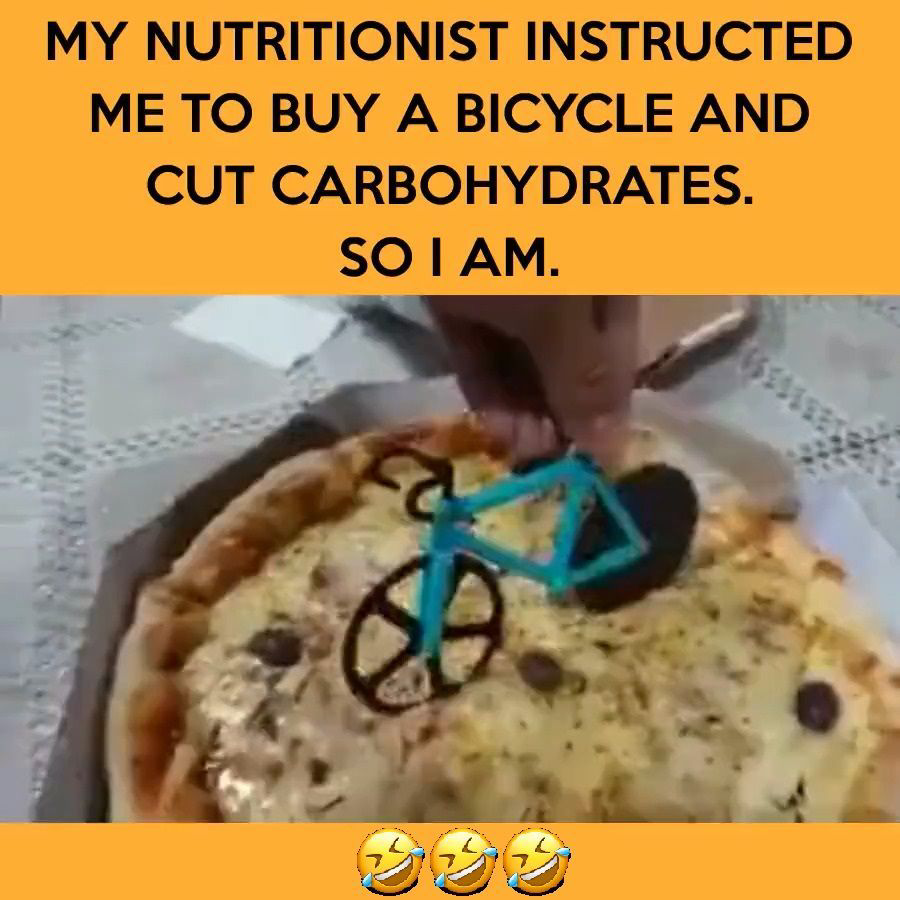
What if, it's a low carb pizza? Imagine that you have substitutes for all the foods kids love to eat with healthier replacements, that requires less insulin, less damage , and give a tension free life. What if we cut down inflammation due to processed foods and improve nutrition and overall health? That is exactly what we are doing now.
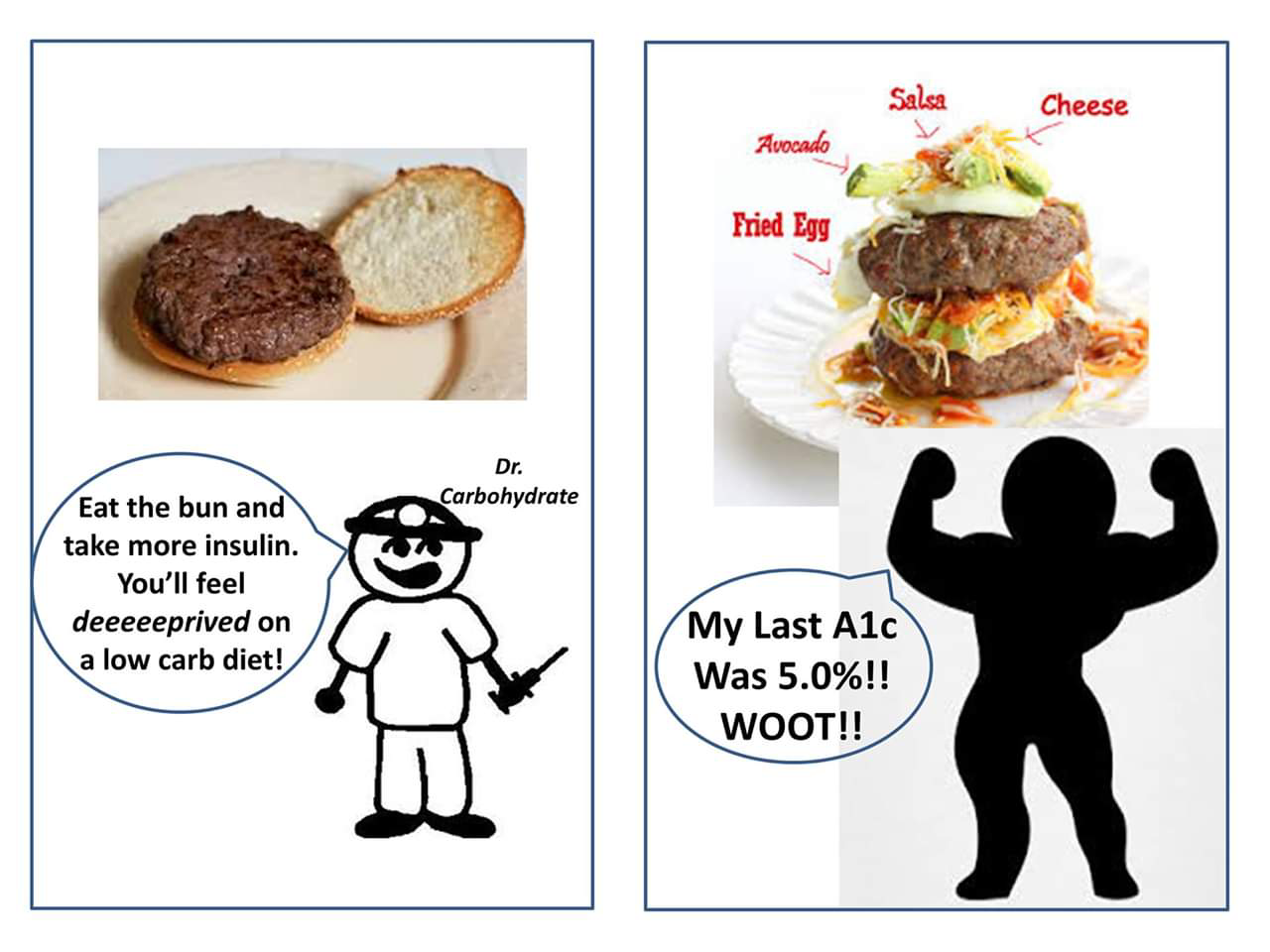
Look at the nutrition of a cauliflower crust pizza :
Nutrition Facts
(Amount per serving. Serving size in recipe notes above.)
Calories 106
Fat 6g
Protein 10g
Total Carbs 5g
Net Carbs 3g
Fiber 2g
Sugar 2g
Are people happy with these low carb substitutes? Yes they are! You can try them out yourselves and see. People also seem to be addicted to enjoy smooth flatlines on their BG graphs with lower insulin doses and more predictability!

T1D is not just about managing sugars. There is a lot more to it. We will have to dig into these little details where the devil lies, for the future of our little warriors.
